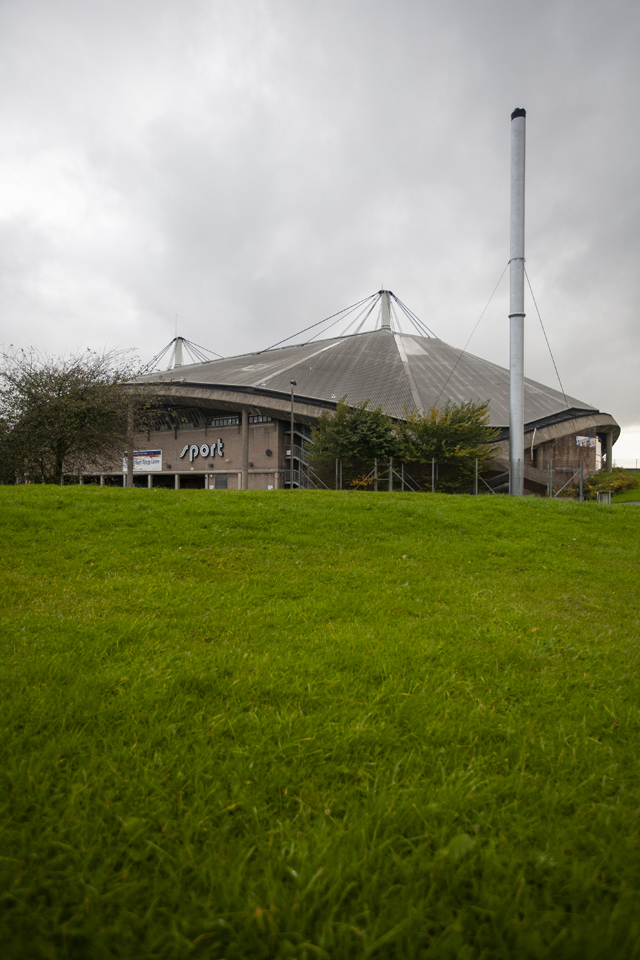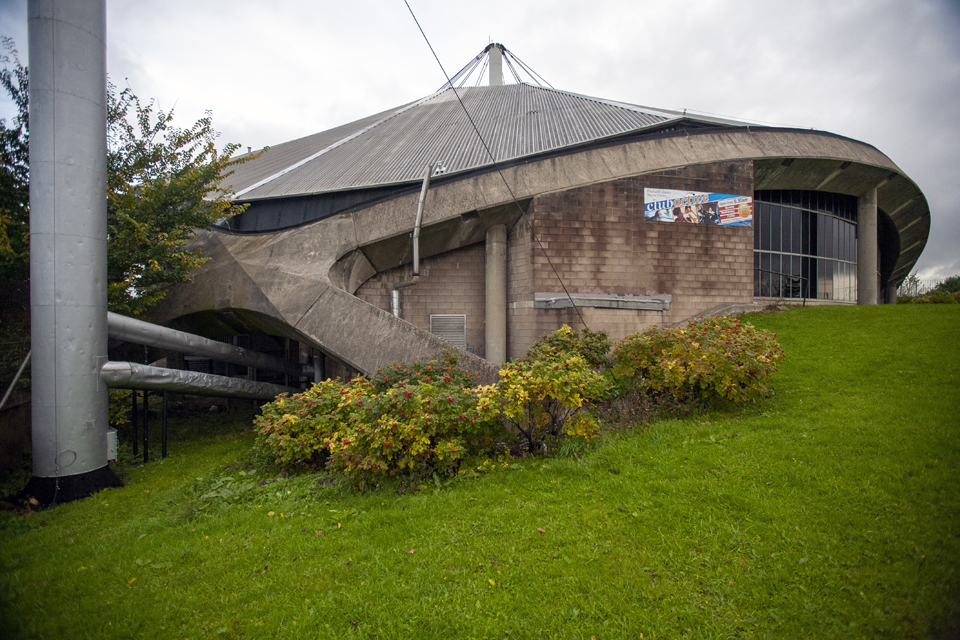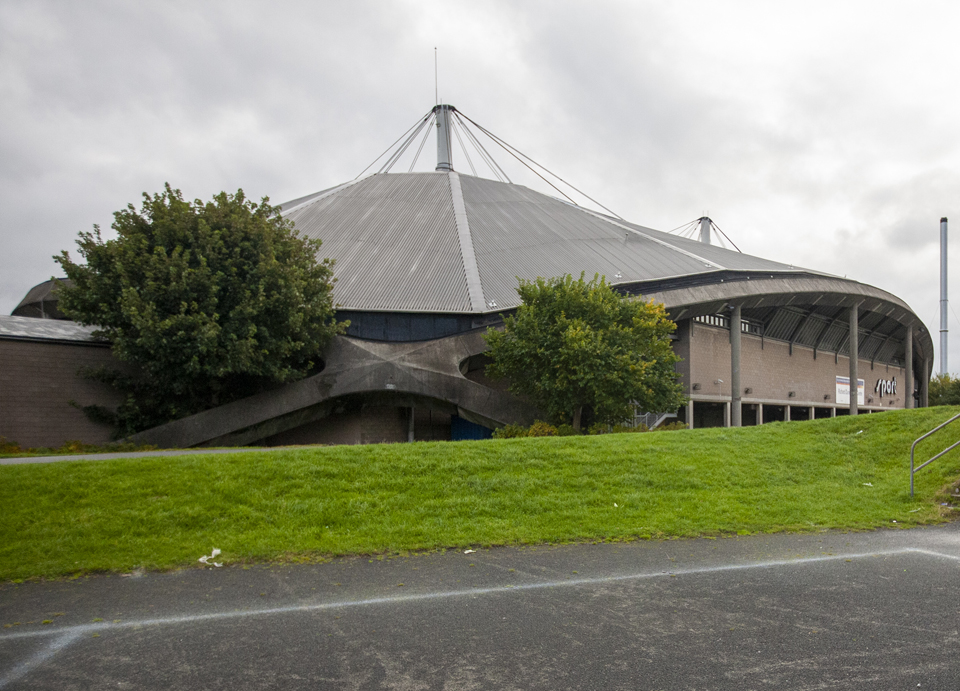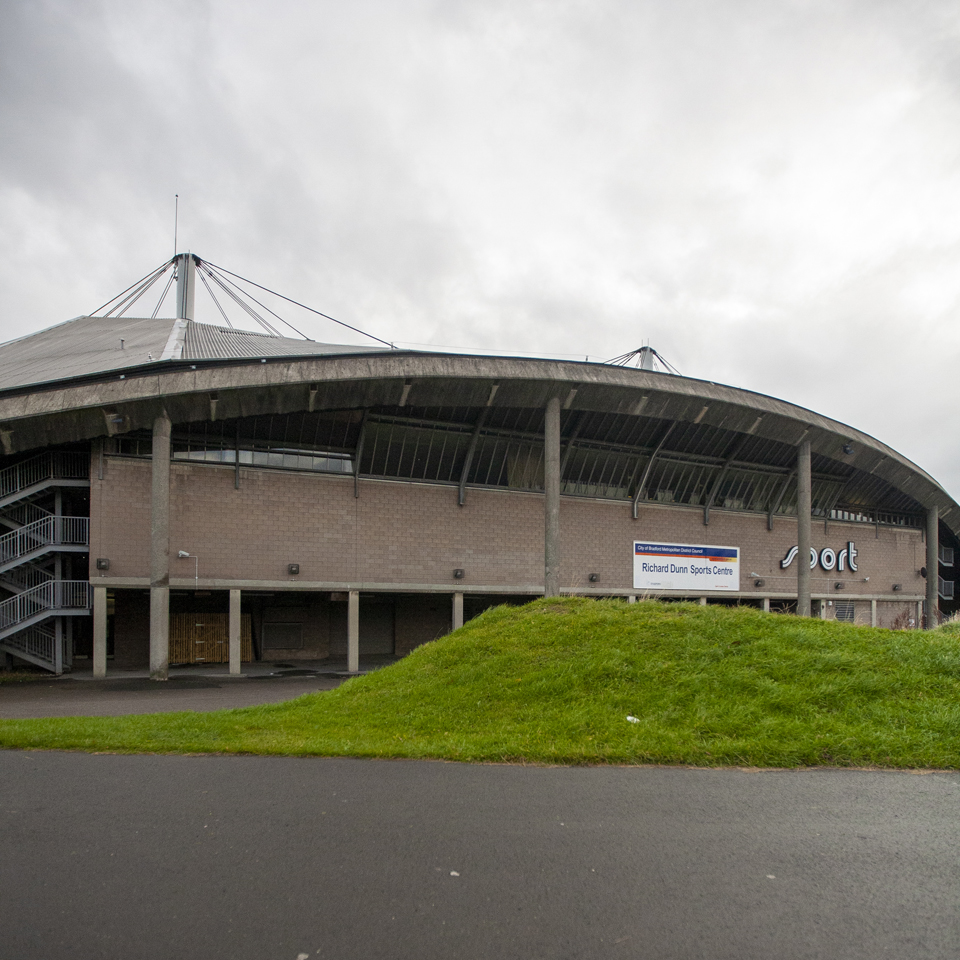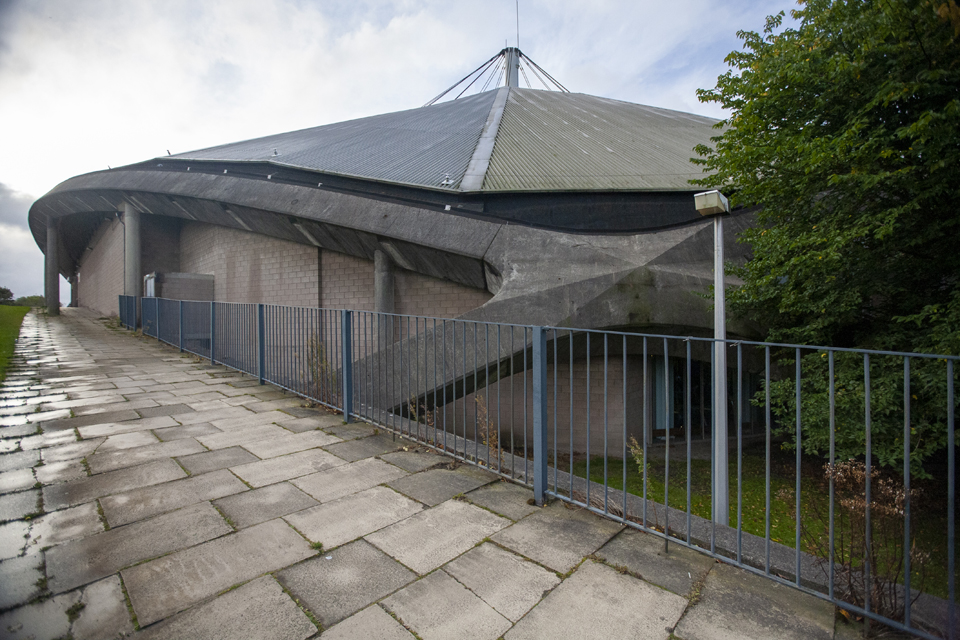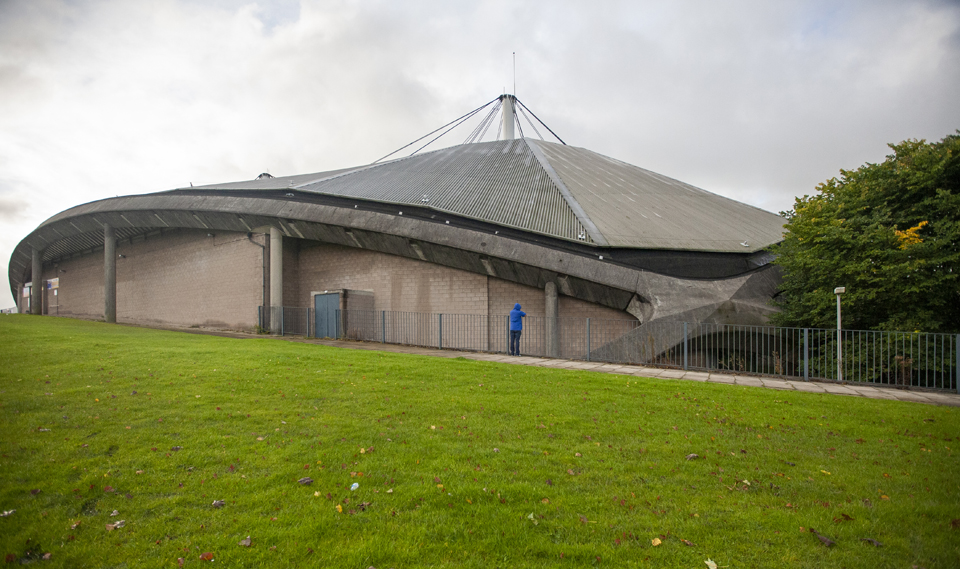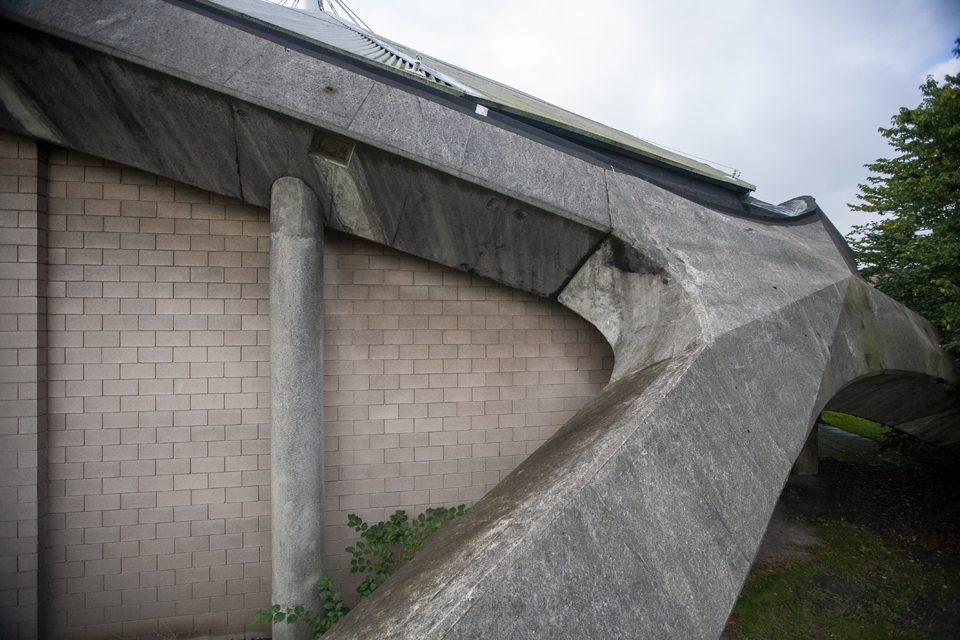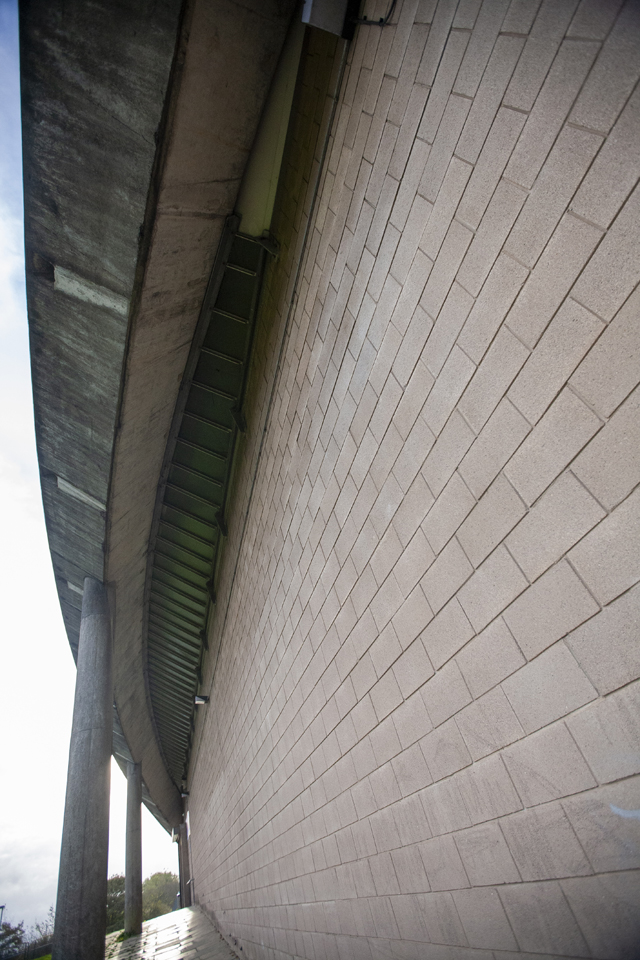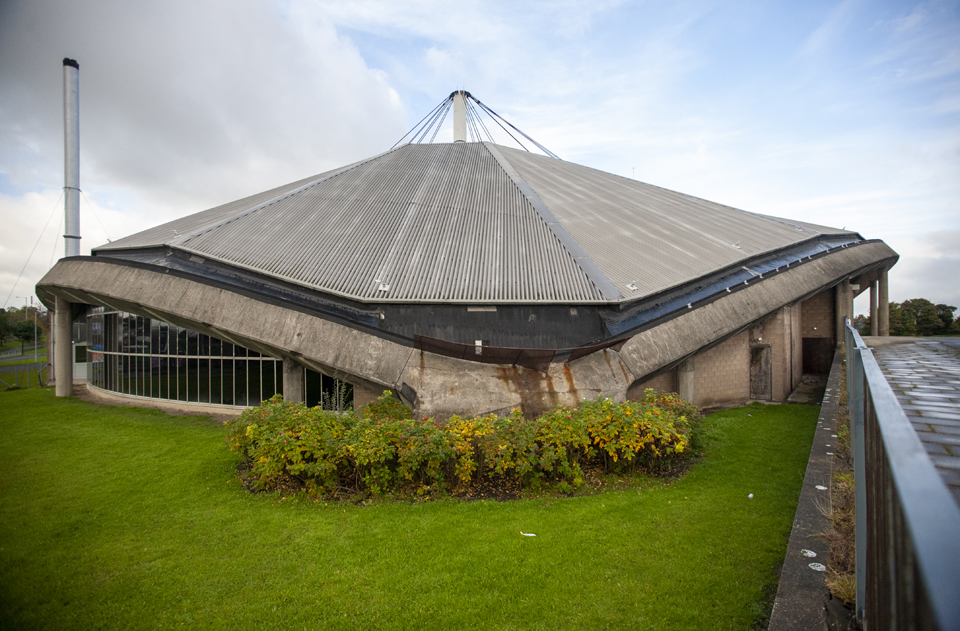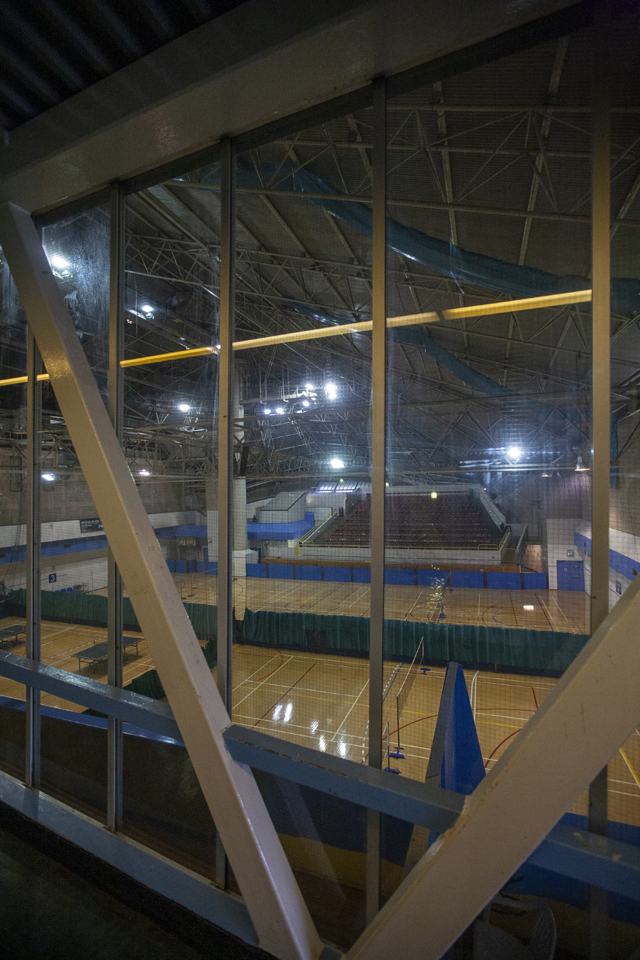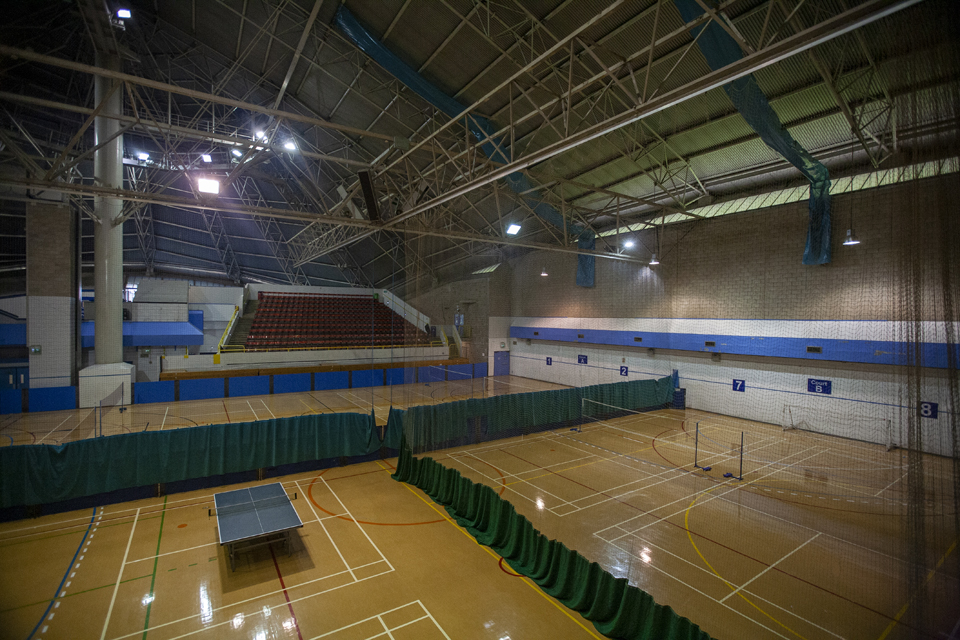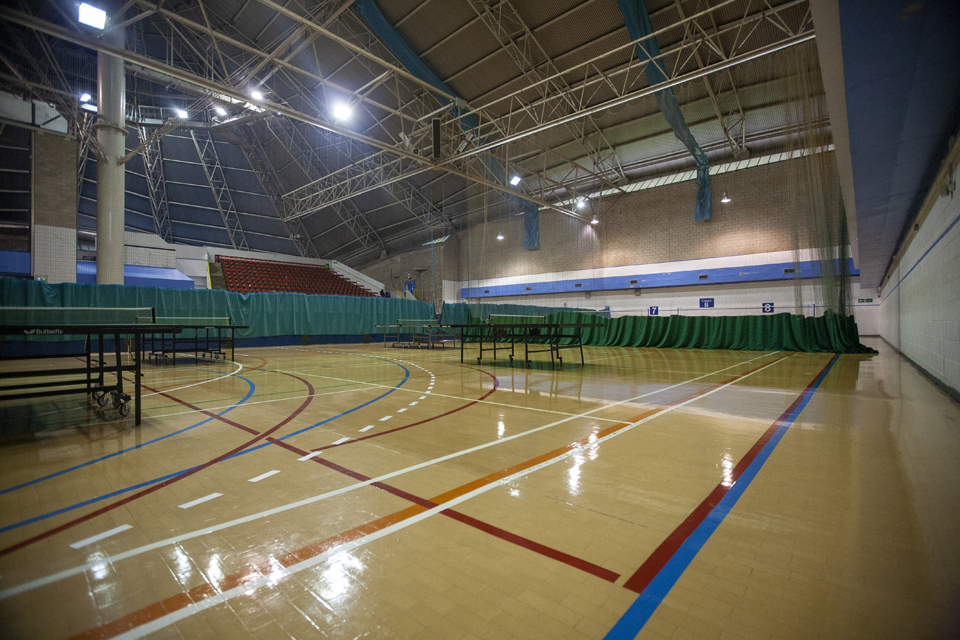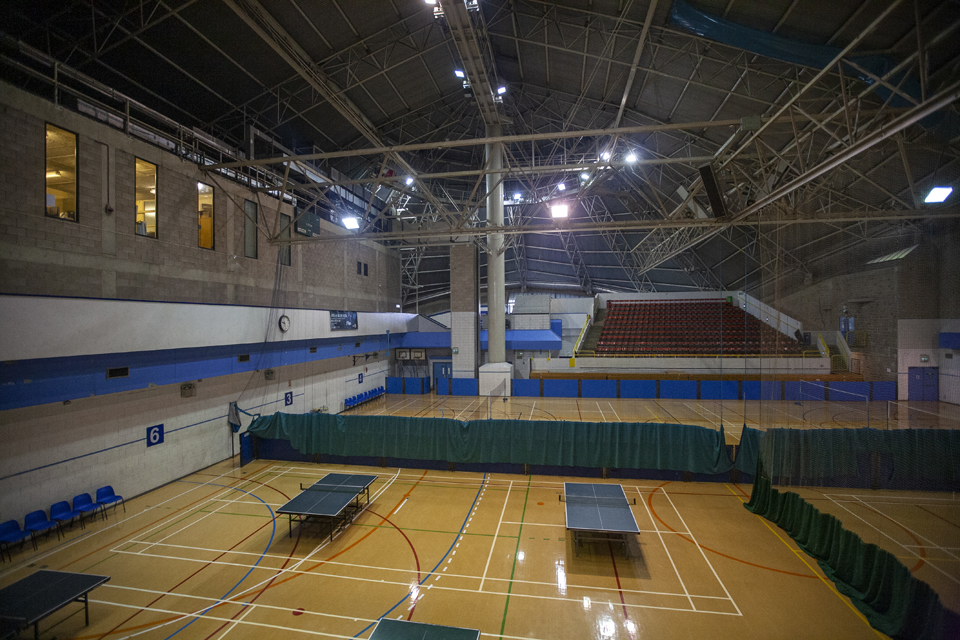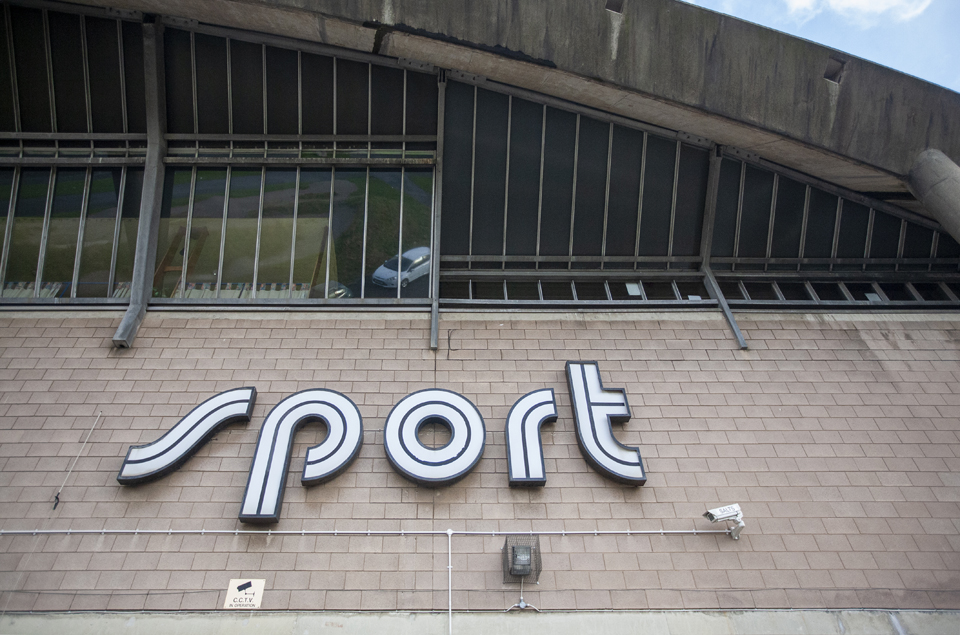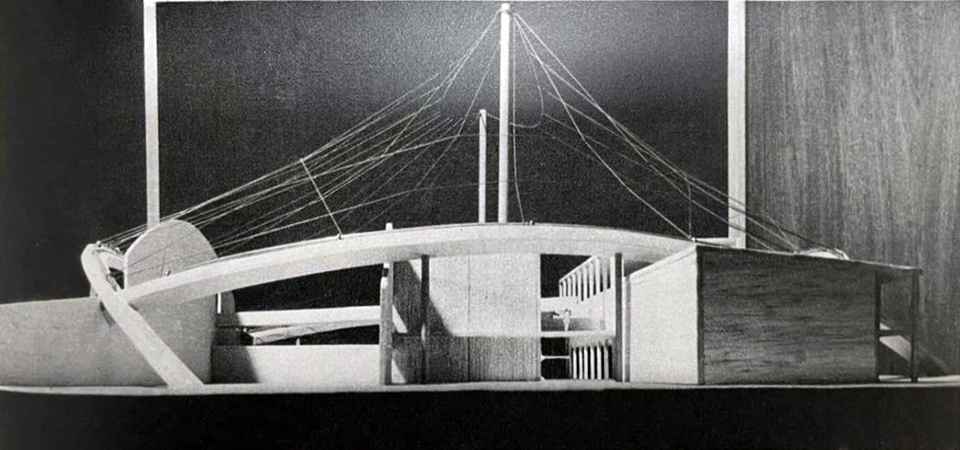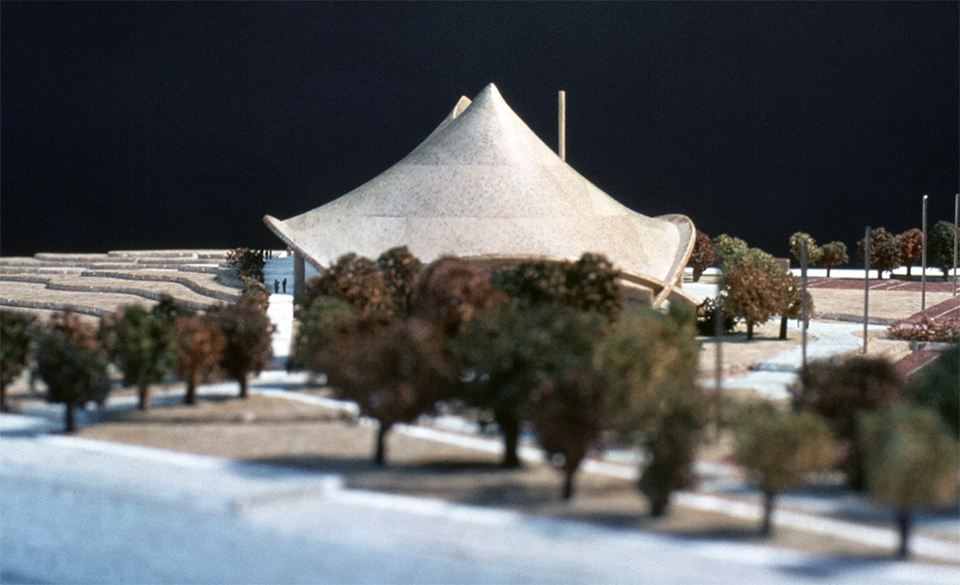Richard Dunn Sports Centre
1978
Named after a local boxer, the Richard Dunn Sports Centre opened in the Odsal area of Bradford in 1978 (Dunn worked as a scaffolder on the building and during the construction downed tools for a world title fight against Muhammad Ali in 1976). It was one of a group of pioneering municipal multi-use sports and recreation centres built in the wake of the Wolfenden and Abermarle Reports on sports provision and youth services. Deliberately directed at leisure, rather than competition, the building housed a novel fun pool with its own beach and an artificial climbing wall - indicative of the popularity of the growing pursuit with many leading outdoor sites to be found across Yorkshire. Considering that much local authority architecture was on the wane after the 1974 local government restructuring, makes this dramatic building even more remarkable. Although the contract was only let on 31st March 1974, one day before the reorganisation invoked by the Act was enforced. Its design life began in 1970 when the City Architect of Bradford, Owen Parry, recruited three final year undergraduate students to their first posts and asked them to conduct feasibility studies - Trevor Skempton was assigned a sports centre and stayed with the Department until 1976. The original design was for a cable-net roof and the arched ring beam was designed to provide anchorage but, the building regulations approval was not forthcoming, and the roof design also exceeded budgetary limits. Thus, the switch to a cable-stay roof was invoked, allowing the concept for all the activities to be housed under a single roof to be built. Skempton recollects his asking the contractor, Alfred McAlpine & Sons, to retain the original cable anchor sockets in the arches unfilled, leaving a legacy of these decisions plainly visible [1]. The site itself was formerly rough pasture and had been levelled by tipping - the flat area was used for exterior sports pitches. The entrance was the only break in the enclosure of the external walls and was set at the high point of the site. On entering, a link bridge connected to the rear of the building and from the gallery of the bridge were views of the pool hall and main hall. The building was fully accessible for those with limited mobility, each level was served by lifts and ramps, contrasting with most sports centres of the time that were a series of spaces collected together as different sized boxes. The sectional diagrams of the scheme would not be out of place in the late 1990s office of OMA. The mechanical and electrical engineering was done in house and the single volume offered advantages – an oil fired warm air system heated the pool hall to 30°C and the excess heat was recycled via a thermal wheel (warm extracted air used to heat incoming fresh cold air) around the rest of the building. One of the 1220mm steel masts, that supported the roof, doubled as a chimney to the pool hall. The centre accounted for a vast range of activities including cricket and golfing practice, archery, small bore shooting, squash, trampolining, table tennis, badminton, weight training and gymnastics – truly a multi-purpose leisure centre. Following its closure in November 2019, the Twentieth Century Society made an application for its listing and it was approved by the Department for Digital, Culture, Media and Sport in April 2022 and awarded Grade II status [2].
[1] https://www.architectsjournal.co.uk/news/listing-saves-bradfords-tent-like-70s-leisure-centre-from-demolition [Accessed 9 April 2022]
[2] https://historicengland.org.uk/listing/the-list/list-entry/1480179
